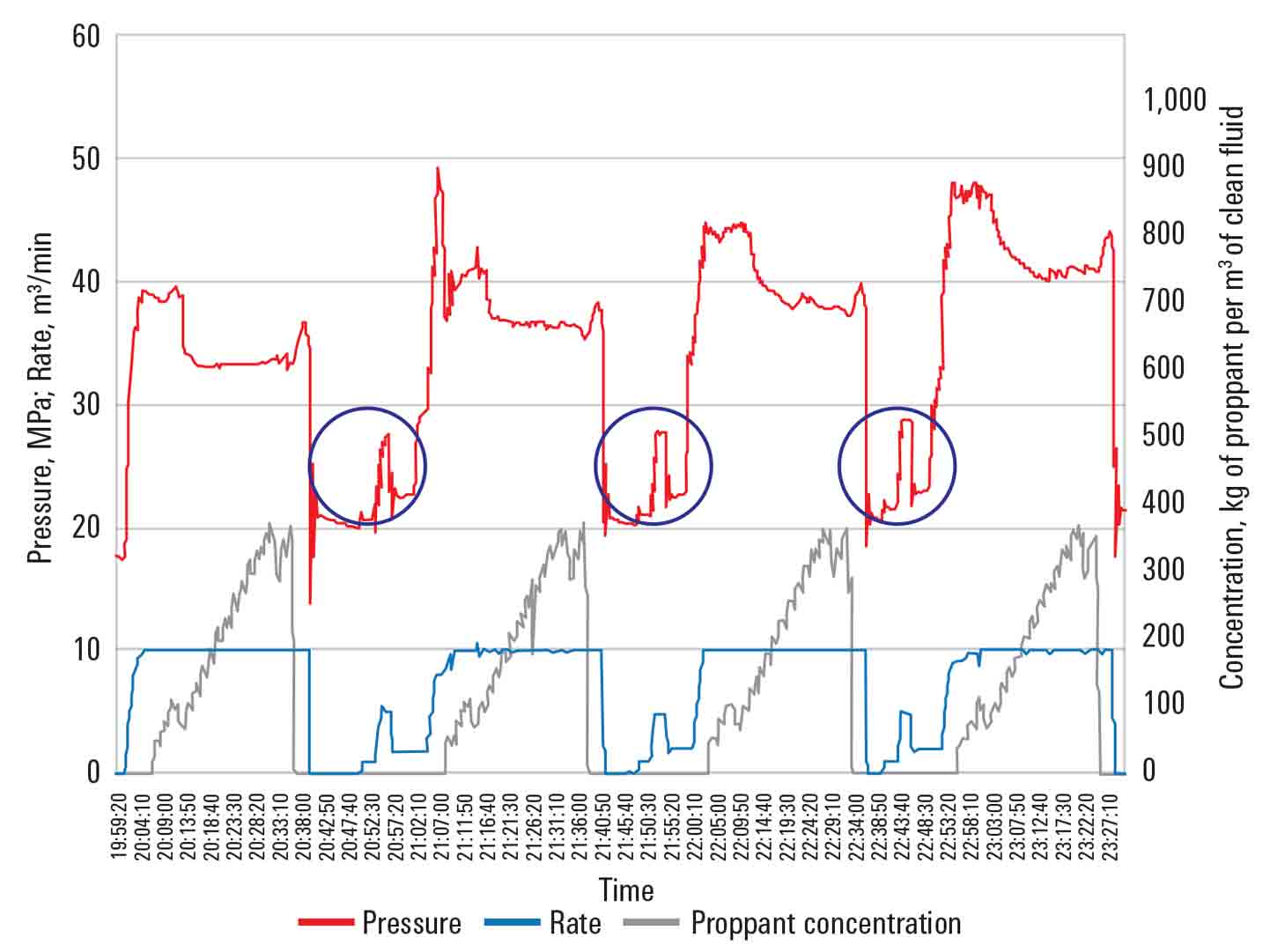Effectively stimulate the well regardless of water quality, proppant volume, or location constraints.
BroadBand Sequence Service Stimulates Well with Damaged Openhole Completion, Canada
Published: 10/08/2018

BroadBand Sequence Service Stimulates Well with Damaged Openhole Completion, Canada
Published: 10/08/2018

Damaged completion needs effective limited-entry fracturing
An operator in the unconventional Montney Formation in Canada typically completes wells using openhole ball-drop systems. When these completion systems fail, it is usually because of a leak in the heel section. To repair the leak, the operator runs a casing patch, which creates a restriction that limits the maximum ball size that can be pumped. As a result, the top several stages of the well, at least, must be stimulated in some other way.
The conventional remediation sequence for these problems is to use coiled tubing to mill out the ball seats whose balls will not fit through the patch, and then perforate the casing. Stimulation follows similarly to operations in limited-entry wells, using conventional diverters to try to distribute the fluid and fracturing pressure across all the perforations.
However, conventional diverters are designed to plug small, relatively short perforation tunnels, not perforations through casing into a relatively large openhole annulus and created fractures. As a result, conventional diverters do not generate measurable diversion pressures in ball-drop completions in the Montney Formation, regardless of the volume of diverter pumped. The operator needed effective diversion to match the higher pressures observed in other completion types and plays.

Large-particle composite pills temporarily block fractures
Schlumberger recommended a BroadBand Sequence service featuring an engineered composite pill comprising a proprietary blend of fibers and degradable diversion particles with tetramodal size distribution. For this well, the pill included particles larger than those used in conventional trimodal diverter systems. The particle combination is designed so that the large particles are intercepted at the entrance of a fracture, while smaller particles reduce permeability to improve isolation. The fibers reduce the likelihood of particle separation during pumping and enhance the bridging mechanism. As with conventional diversion technology, the pill degrades after the stimulation treatment, leaving no residue to hamper fracture conductivity.
High-pressure diversion proves 10 distinct stimulation stages
For the operator’s next well with a damaged casing, the patch restricted the activation balls for stages 36 through 45. The ball seats were milled out and each zone perforated using coiled tubing.
During the subsequent stimulation operation, 10 stages were successfully treated, with an average diversion pressure of 1,850 psi [12.8 MPa] for 100 lbm [45 kg] of particles and clearly increasing treating pressure on each successive stage. Diversion pressure response ranged from 7 to 181 psi/lbm [106 to 2,751 kPa/kg] of diverter pumped, with a maximum differential pressure of 4,800 psi [33 MPa].
To ensure technical efficiency, a high-pressure injector was used to pump the diverter as concentrated pills without dilution. The injector also had an efficiency benefit for the operation: The crew could reload the diverter material in less than 10 minutes between stages, so operations were not interrupted.

Challenge: Distribute fluid and fracturing pressures across 10 stages of a patched openhole ball-drop completion without delaying stimulation operations.
Solution: Deliver a BroadBand Sequence fracturing service comprising engineered fluids and a composite pill with fiber and large particles.
Results:
- Completed 10 fracturing stages with increasing treating pressures on successive stages, indicating thorough distribution of pressure and stimulation fluid
- Conducted uninterrupted stimulation operations by refilling the high-pressure pill injector system between stages
